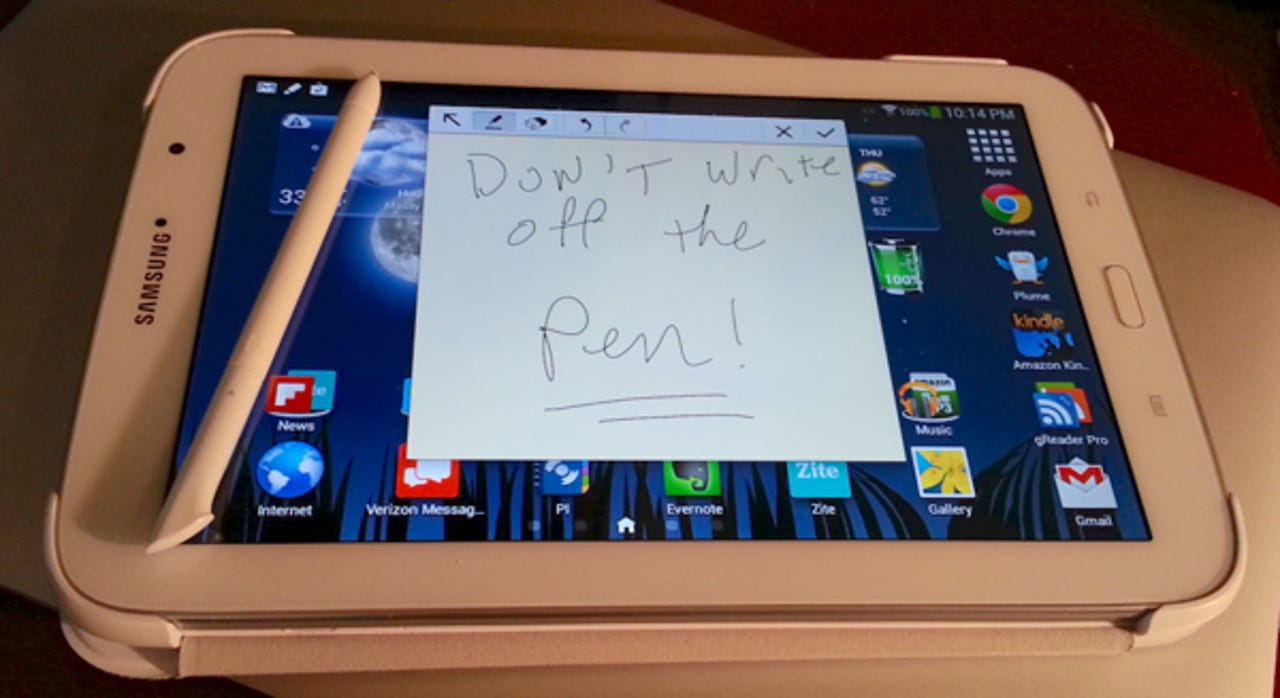Deploying tablets in the workplace: Don't write off the pen

The tablet is entrenched in millions of homes and is now moving into the workplace. It started with workers bringing them in on their own and now corporations are beginning to deploy them to employees. Tablets have benefits over other computing devices, including the pen option which is seldom mentioned by those deploying them.
Digital pens go well with slates, at the very least they add a new dimension to other benefits of the tablet. Using a pen with a tablet is as natural as using a pen with paper, but keeps everything digital with all the benefits that come with that.
While pen use is not for every company, it's a mistake to overlook considering them for tablet deployments. Pen options are available for all three tablet platforms making it worth considering no matter what tablets are being deployed.
There are numerous third party pens for the iPad, from simple capacitive models with big, spongy tips to others with writing tips like standard pens. If Android tablets are to be incorporated, Samsung Galaxy Note slates have pens integrated into their design. Windows 8.1 has pen support in every facet of operation and makes the most sense for tablet programs in the enterprise.
It's all about options
Why should IT departments consider offering pen support with tablets? Quite simply, it's another facet of tablet use that can be leveraged by workers and the company in beneficial ways. Most workers likely haven't used a pen with a tablet, but with exposure to the benefits they may warm to using it in short order.
One of the basic functions a pen opens up is that of taking notes in ink. When you think of taking handwritten notes you probably think of executives in the boardroom scribbling on the screen. With tablets as economical as they've ever been, that image should extend to employees at all levels.
Those in charge of deploying tablets should understand the advantages digital handwritten notes have over both typed notes and traditional paper notes. First and foremost, the ability to search digital handwritten notes is powerful. Notes don't have to be converted to digital text, the ink can be searched directly. That means you can always find needed information in an instant. Try that with those stacks of paper notepads.
Equally important, handwritten notes can be automatically backed up to major cloud storage services. No more losing that important piece of paper. Having all employee notes in the cloud means they aren't lost when the worker leaves the company. All project notes are saved no matter what happens in the workforce.
Tech Pro Research
Pen input can be useful for a lot of work functions. This is true for any task that involves tablet use while walking around a job site. Warehouse functions comes to mind in this regard. Workers involved in taking inventory can also use the pen to make things easier. There are many situations in the enterprise where using a pen makes good sense.
That's not to say that a pen is always better than using a keyboard with a tablet. Sometimes using a tablet by touch is the best way to go.
It's worth considering the options when planning to deploy tablets in the enterprise. This includes allowing workers to use the pen when it makes the most sense. To ignore the possibility may not be in your company's best interest.
Those thinking about bringing a tablet to work in BYOD situations should think about the pen, too. It extends what can be done with the tablet, so why limit yourself?
Additional tablet coverage:
- HP Envy x2 revisited 45 days in
- HP Envy x2 quick take: Good laptop and great tablet
- HP Envy x2 for $525: I had to buy one at that price
- Asus Transformer Book T100: One week in
- Asus Transformer Book T100: First impressions
- Asus Transformer T100 is calling my name
- Asus Transformer Prime: Perfect for business trips (review)
- What I want: Asus Transformer Prime running Windows 8
